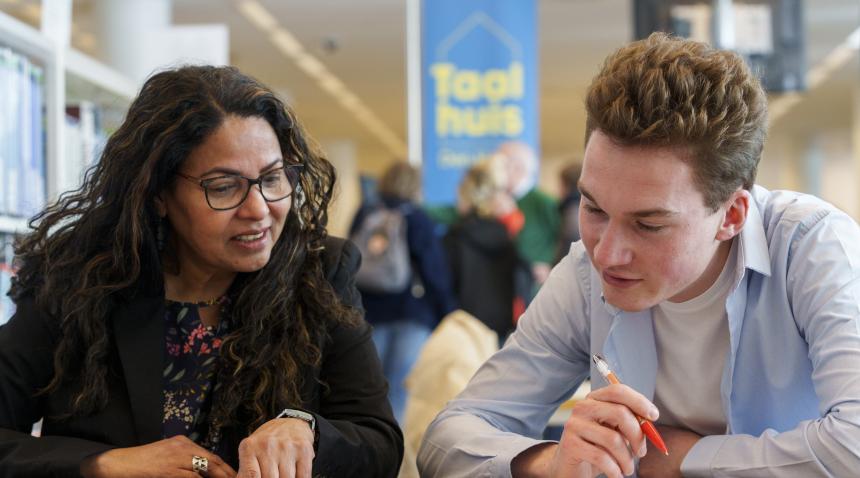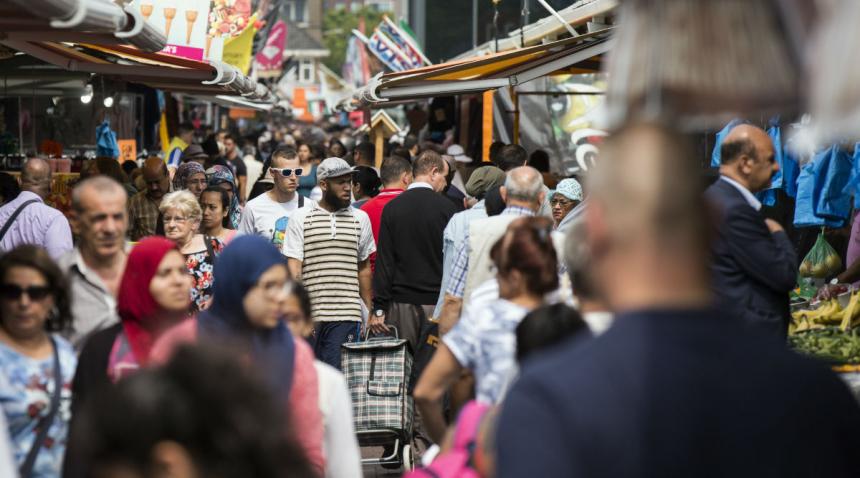
Dutch way of living
From its freedoms to its comforts, the Dutch way of life has many advantages. At first, some typical Dutch ways of speaking and behaving may seem unusual, but it can be easy to adapt and feel welcome in this new culture. Differences are widely accepted, but it can help to arrive prepared, by learning about some of the most common Dutch habits.
Cycling
Your number-one necessity in the Netherlands is a bicycle. The Netherlands has some of the best biking infrastructure in the world. So whenever you need to go somewhere, just hop on your bike. It’s often faster and always cheaper than driving or public transport – and it’s an easy way to keep fit. There are also many adapted options, such as tricycles, wheelchair bikes, and wheelchair tandems. You’ll also often see parents transport a whole gaggle of kids in a cargo bike or bakfiets. And electric bikes are gaining in popularity, too. Just watch out for the weather!
Greetings
The Dutch are much less formal than many other cultures, but there are some generally accepted ways to greet each other. If you walk into a room full of strangers (like a shop or a doctor’s office), give everyone a simple ‘hello’ or ‘good morning’/‘good day’/‘good evening’ (goedemorgen, goedemiddag, and goedenavond). When at a formal or informal meeting, it is polite to introduce yourself to everyone there: shake everyone by the hand, including children.
With closer friends and some acquaintances, it’s common to give three kisses to say hello: cheek to cheek to cheek. There are a range of typical Dutch goodbyes, but you can leave most situations by saying dag (day), or with a more informal doei (bye). If you’re not sure which greeting is best for which person, just follow how others greet you!
Birthdays
Things get much more formal at a Dutch birthday. Unlike in some other cultures, if it is your birthday in the Netherlands, you should bring your own cake (taart) or snacks to work. Consider it as treating your guests. Children are expected to bring something to school on their birthdays.
Dutch birthday parties at someone’s home are also a unique experience. When you arrive, you might see everyone sitting in a circle of chairs. Don’t worry, this is normal! Just make sure you not only wish the host happy birthday – you should say gefeliciteerd (congratulations) to every guest, too. Then take your seat and enjoy the party!
Gezelligheid
The Dutch take socialising seriously. Many describe their culture using the famous word gezelligheid. Relaxed social situations, catching up with an old friend, feeling warm and comfortable – these things are gezellig. But for the Dutch this also means something deeper: a strong feeling of belonging and togetherness.
You’ll commonly hear this word used to describe typical Dutch habits and occasions, such as a borrel: an informal get-together, often with drinks and bittergarnituur (fried snacks).
Dutch Food
Traditional Dutch cuisine is mostly very simple and rich. Fried foods are common, not only at a borrel but also in ‘snack bars’ – which open until late, and sell fries (patat or friet) with mayonnaise. Accompany this with a kroket (a croquette, usually made of beef or veal), frikandel (a mixed-meat sausage), kaassouflé (a deep-fried cheese soufflé) or a bamischijf (a fried snack made of noodles).
As this last snack shows, Dutch cuisine also includes many international foods. In particular, foods from former Dutch colonies Indonesia and Suriname are very common: try a rijsttafel (a platter of mixed Indonesian dishes) or a roti (a Caribbean-Asian flatbread served with spicy vegetables or meat).
More traditional Dutch dishes are fairly bland comfort food: hearty food that’s perfect for winter in the Netherlands. These include hutspot (potato, carrot, and onion mash, usually with meat), stamppot (potato mash mixed with vegetables, often served with a smoked sausage), and snert (a thick pea soup).
Dutch lunches are also typically straightforward. Many people eat the same thing every day: a boterham, a simple sandwich of bread and cheese or meat. However, a rather more unusual bread topping in the Netherlands is hagelslag: chocolate sprinkles – and it’s not just for kids!
Dutch Directness
If you come from a culture with a strong focus on politeness, courtesy, and reserve, the Dutch can sometimes seem a little rude at first. The way people speak can be very direct and to-the-point: sometimes even blunt. But this is not meant unkindly: it is important in the Netherlands to be pragmatic and communicate clearly. And it means you can usually trust the Dutch to tell you their truthful opinion.
This relates to the Dutch love for consensus. In a society that tries hard to be equal, it is important that everyone can be heard. The poldermodel way of decision-making is based around this: an agreement made by cooperation, despite differences. This encourages people to say what they think, even if others do not agree.
Speaking Dutch
A similar approach may be needed if you want to improve your Dutch. Almost everyone in the Netherlands speaks fluent English, which can make it difficult for beginners to practice speaking Dutch. Many speakers will prefer to switch to English if they hear you struggling in their language. In this situation, take a lesson from the Dutch way of life: be direct, and ask them to stick to their native language! They will gladly do so.
Read more about social life in the Netherlands. And if you want to make a start with point 1 of the above, learn more about cycling. Wondering how to behave at work? Find out about Dutch workplace culture.



